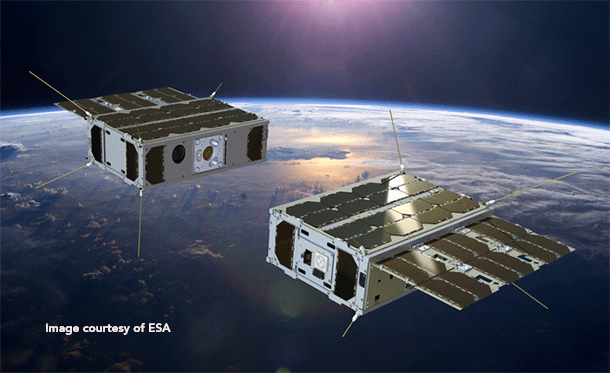The revolution of miniaturization

In early June the Noordwijk (the Netherlands) headquarters of the European Space Research and Technology Centre (ESTEC) hosted the fourth CubeSat Industry Days. This biennial, three-day event, attracting a turnout of over 250, dealt with the latest technological CubeSat developments, ESA’s activities in this field, the future priorities and the technical and legal challenges still to be met.
A CubeSat is a nanosatellite built to standard dimensions (Units or “U”). Each Unit is a 10 cm x 10 cm x 10 cm cube weighing about one kilogram. The original idea of the CubeSat was the joint brainchild back in the nineties of the California Polytechnic State University (Cal Poly) and the Space Systems Development Lab of Stanford University.
In recent years there has been a notable boom in this idea. Configurations ranging from 0.5U to 24U have been developed, supporting missions of scientific exploration, earth observation, navigation and technology demonstrators, among others. By now this technology has become a reliable, responsive and economical solution, making space access easier on the strength of its modular concept, design- and manufacture-standardization and system integration.
GMV took part in ESA’s CubeSat related technology development activities, presenting the company’s inhouse subsystems, products and technology developed for various projects such as RACE (Rendezvous Autonomous CubeSats Experiment), JUVENTAS (one of the two CubeSats making up the HERA mission) and the GNSS software receiver (GPS and Galileo). GMV also showcased the ground segment solutions providing these satellites’ attitude and orbital control.